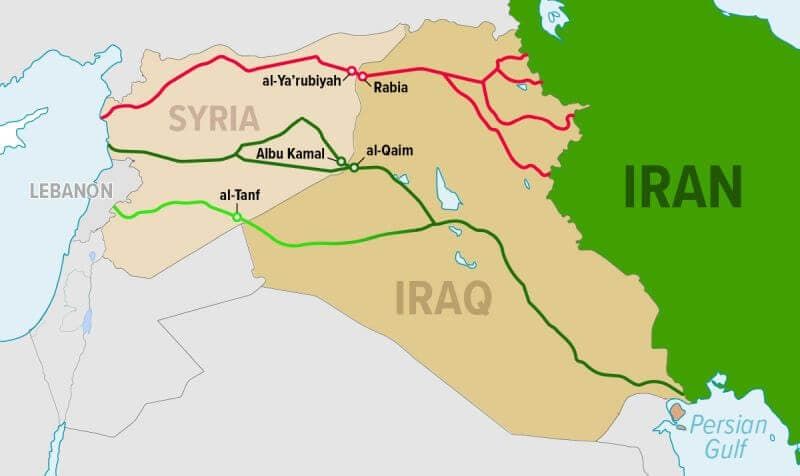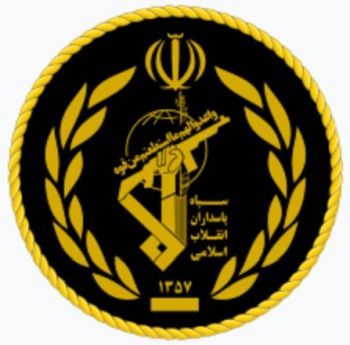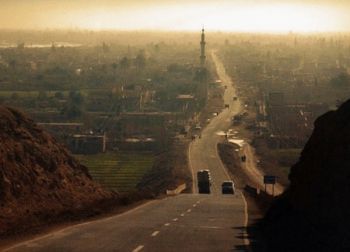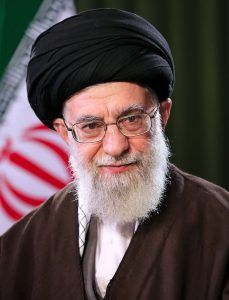Following Bashar al-Assad’s renewed grip on power in Syria, the strengthening of Hezbollah in Lebanon, and most recently the political and military victory of pro-Iranian forces in Iraq, the Iranian axis is now a significant factor in Middle East geopolitics. Iran’s “land bridge”, the uninterrupted stretch of land spanning from sovereign Iranian territory all the way to the Golan Heights and southern Lebanon, is a clear indication of the strength of Iran’s influence in the region, its desire to export its revolutionary ideology and its pursuit of hegemonic influence across the entire Middle East,
Iran and Hezbollah’s references to the destruction of Israel are nothing new. On July 12th, 2019, Hezbollah chief Hassan Nasrallah claimed in an interview with Al-Manar television, “In case of any confrontation, Israel would be on the verge of vanishing, and it knows this.” He made sure to note that Hezbollah’s missiles can now strike any target in Israel, even down to Eilat.
Behind the scenes, though, Iran is fueling this threat by slowly piecing together a land bridge to give it road access through neighboring territories from Tehran to the Mediterranean.
The three main road routes cut through Iraq and Syria, ending at the Syrian coast, southern Lebanon, and even Israel’s border. Iran’s land bridge is a pipeline for transporting people, resources, and weaponry to Iranian-backed militias across the region. This poses significant challenges to Israel’s security, and Iran sees it as the next critical step in its quest for dominance in the Middle East.
Join the fight for Israel’s fair coverage in the news
Iran Branches Out
Following the 1979 Islamic Revolution in Iran, the Supreme Leader Ayatollah Khomenei established the Islamic Revolutionary Guards Corps (IRGC) in order to protect the revolution and the new Shiite theocratic system. As the IRGC grew, it formed an air force, land militia, navy, and the Basij, an internal security group to suppress dissidents and ensure state control over society.
More importantly, it formed the Islamic Revolutionary Guards Corps – Quds Force (IRGC-QF), a paramilitary organization designed to fulfill Iran’s goal of exporting the revolution across the Middle East.
The IRGC-QF built ties with mostly Shiite state and non-state actors, yet some, including Hamas, the Taliban in Afghanistan, and the Palestinian Islamic Jihad, were Sunni.
The first of these foreign ties was a terrorist group well known to the Western world for its growing influence in Lebanon’s government and threats to Israel: Hezbollah. In 1980, Iran sent military advisory forces to Lebanon to help develop Hezbollah’s military wing. These forces became the core of the IRGC-QF.
Today, Hezbollah has become Iran’s primary military ally and are the destination of many of the troops and items passing along Iran’s land bridge routes. The US Department of Defense estimates that Iran provides Hezbollah with between $100 million and $200 million in aid annually.
However, in order to reach Lebanon by ground, the IRGC needed to garner pro-Iranian support across neighboring Iraq and Syria.

That vision became a reality starting in 2003, when the US invaded Iraq and toppled the Sunni leader Saddam Hussein. This, exacerbated by the US troop withdrawal in 2011, left a power vacuum in Iraq for Iran to exert its influence and help implement a Shiite-dominated government.
The last puzzle piece fell into place with the start of the Syrian civil war. Iran jumped on the opportunity to assist President Bashar al-Assad’s government in fighting the rebel forces, giving Iran a major foothold in Syria.
Since the start of the war, Iran has transported thousands of troops and tons of military equipment to Syria, propping up Assad’s government and other Shiite proxy groups in the area. Currently, Iran maintains an estimated 15,000 Shiite foreign fighters in Syria (not including Hezbollah).
Iran’s leadership has recognized the geopolitical importance of Syria in its broader regional strategy.
Back in 2012, Iranian President Ali Akbar Hashemi Rafsanjani explained to an Iraqi official, “Syria must not turn out in such a way that your and our paths are shut. We must possess Syria. If the thread from Lebanon to here is cut, bad events will happen.” A year later, the leader of an Iranian hardline think tank stated, “Syria is the thirty-fifth province and a strategic province for us… If we lose Syria, we cannot keep Tehran.”
These hawkish statements reveal Iran’s aggressive regional strategy, fighting tooth and nail to lead an anti-Western coalition of state and non-state actors in the Middle East. Iranian leadership refers to this alliance network as the Axis of Resistance.
Securing these relationships has been vital to Iran’s ability to establish a land route from Tehran to the Mediterranean.
Prior to the Land Bridge
 Despite the developing Axis of Resistance, Iran’s land bridge wasn’t plausible until around 2017 due to resistance from the US, the Kurds, ISIS, and other groups in the region.
Despite the developing Axis of Resistance, Iran’s land bridge wasn’t plausible until around 2017 due to resistance from the US, the Kurds, ISIS, and other groups in the region.
Before this, Iran relied heavily on air and sea routes to Syria and Hezbollah in Lebanon.
Iran first began transporting oil and weaponry to these areas by boat. However, Iranian ships were vulnerable to pro-Western interference in the Mediterranean and Red Sea. For example, in 2009, the US Navy intercepted the MV Monchegorsk, an Iranian ship carrying 2,000 tons of explosives from Iran to Syria.
Iran’s options expanded in 2012 when the Iraqi government opened its airspace to flights from Iran to Syria. This became Iran’s air bridge to Syria. Compared to the sea, it was an easier pipeline for sending troops and advanced weaponry to Hezbollah and Syrian proxies, helping expand Iran’s influence. Since 2016, almost 1,500 flights have run between Tehran and Damascus.
Despite having both sea and air routes to Syria, Tehran hit another roadblock: its aircraft, largely from the Soviet era, have been aging. US sanctions have rendered Iran incapable of purchasing new planes from Boeing and Airbus, the two biggest manufacturers in the world, as well as from other smaller Western developers.
With two unsustainable options, Tehran has shifted course towards its third choice; it has paved the way for its land bridge, a reality that has fully materialized within the last few years.
Iran’s Land Bridge Takes Shape

In November 2017, Assad’s forces and Shiite militias backed by the IRGC-QF took over the town of Albu Kamal on the border with Iraq from Islamic State forces. On the other side of the border, Iranian proxies were already in control of the Iraqi town of al-Qaim. This marked a critical turning point in Iran’s land bridge aspirations, giving pro-Iranian forces full control over a major checkpoint between Iraq and Syria.
The Albu Kamal border crossing secured Iran’s central route to Syria, a network of roads leading from Iran to Baghdad, then following the Euphrates River west to al-Qaim before entering Syria.
By this time, some suspected Iran was already creating a northern route to Syria’s Mediterranean coast. The route crosses from Iran into central Iraq, then cuts northwest through the major town of Sinjar before entering Syria through the Rabia border crossing in the northernmost part of the country.
Concerns surrounding this land bridge grew after Iraq’s Popular Mobilization Forces (PMF), a state sponsored militia unit backed by Iran, captured Tal Afar airport in October 2016, a key point between the towns of Mosul and Sinjar.
After Tal Afar was taken, a few news reports ran stories on a possible land bridge from Iran to Syria and the Mediterranean. However, it wasn’t until the capture of Albu Kamal in 2017 that journalists, government officials, and policy experts finally started catching on.
As a result, AP and Reuters both ran stories about a land bridge for Shiite militias. Additionally, in March 2018, Israeli prime minister Benjamin Netanyahu acknowledged the threat in a speech in Washington. He raised serious concerns, stating that the land bridge would establish a route from “Tehran to Tartus on the Mediterranean,” allowing Iran “to attack Israel from closer hand.”
A possible third route has also emerged in the south, running from Baghdad to the border crossing in southeast Syria near the al-Tanf military base, then through Damascus and into Lebanon.
Because there is a US military base along the southern route and US and Kurdish forces in the north, the central route through Albu Kamal seems the most secure for Iran. However, as the US withdraws more troops from Syria, the other two paths may become more viable.
Iran’s land bridge into Syria and Lebanon is crucial to its ability to transport weapons and personnel to proxy groups across the region, especially to Hezbollah. Consequently, it is helping Iran strengthen its foothold in Syria, Lebanon, and the Mediterranean.
Related Reading: Hezbollah’s Threat to Israel
The Threat to Israel
For Israel, a complete Iranian land bridge means road access to the country’s northern borders.

Considering Iran’s Supreme Leader Khamenei has referred to Israel as a “cancerous tumor” that should be wiped off the map and would not exist in 25 years, Iran’s regional presence is causing intense concern.
In 2018, Khatt-e Hezbollah, a pro-Khamenei newsletter, wrote that Iranian-backed forces had “reopened a land corridor of resistance between Tehran, Iraq, Syria, and Lebanon, and now, they have provided the necessary infrastructure in the Golan to create the upper hand of resistance against the Zionists.”
The IRGC Quds Force already backs the Palestinian Islamic Jihad and supplies Hamas in Gaza with weapons and other forms of support. On top of that, a land bridge to Hezbollah and other Syrian proxies only exacerbates the threat to Israel. This facilitated access will allow Iran to construct more local bases and camps, train Hezbollah and other proxies, and, ultimately, challenge Israel from the north.
It is estimated that Hezbollah has around 100,000 rockets and missiles, a dangerous quantity that could severely test or even overwhelm Israel’s Iron Dome anti-missile system should a large-scale attack occur.
The Israeli leadership has recognized this imminent threat. The IDF has launched hundreds of strikes on Iranian targets in Syria, stating repeatedly that it will not permit Iran to build a permanent military presence in the country.
Iran’s land bridge is now a conduit for fueling its foreign policy goals, and disrupting it will surely be a key part of countering its influence in the region. However, it is important to assess the big picture. David Adesnik, director of research at the Foundation for Defense of Democracies (FDD), and Behnam Ben Taleblu, senior fellow at FDD focusing on Iranian security, explain:
Iran’s greatest asset in the Levant and Iraq is its relationships with the other members of the Axis of Resistance. The land bridge helps to operationalize those relationships; it is one supporting element, not the centerpiece of Iranian strategy. Thus, the U.S. cannot afford to focus myopically on the land bridge. The administration’s mistake, however, has thus far been insufficient attention.
As Iran’s land bridge progresses, it’s time the US and other allies of Israel broaden their focus on Iran. Through asymmetric approaches like relations with terrorist groups and other proxies, Iran has been slowly building up its military and political leverage across the Middle East, making a future conflict with Israel seem almost inevitable. While attention should not detract from Iran’s nuclear development, the international community must place greater emphasis on halting Iran’s land bridge and, ultimately, preventing its goal of the destruction of the State of Israel.
Liked this article? Follow HonestReporting on Twitter, Facebook, Instagram and TikTok to see even more posts and videos debunking news bias and smears, as well as other content explaining what’s really going on in Israel and the region.
Image of Albu Kamal CC BY-SA Wikimedia Commons;


